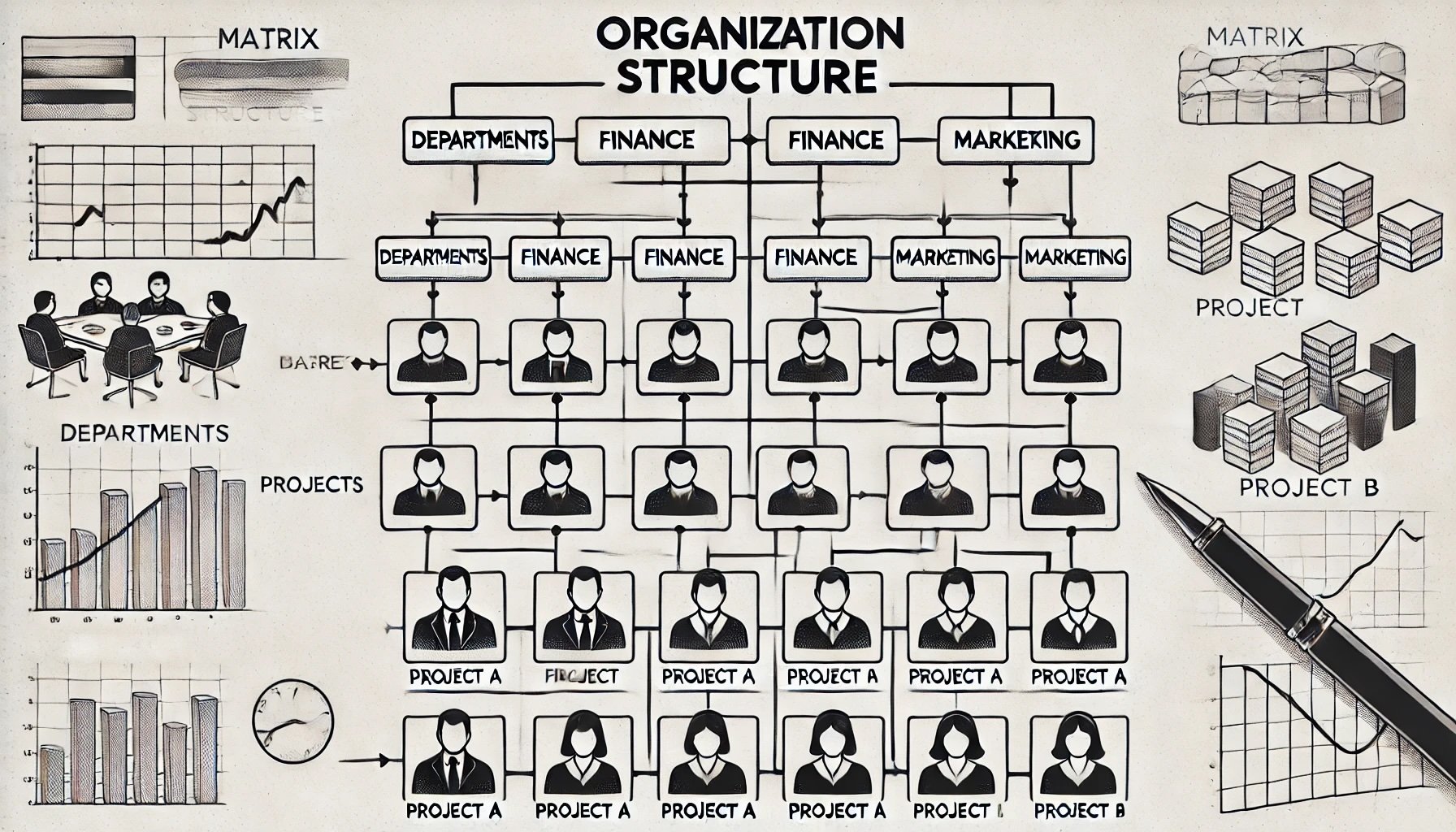Hierarchical, Process, and Matrix Organizations: Key Differences and How to Choose the Right Structure
Organizational structure serves as the foundation upon which a business operates, guiding decision-making processes, goal attainment, and operational efficiency. It can be implemented in various forms, including hierarchical structures (e.g., boss-employee chains), process structures (e.g., step-by-step processes), or matrix structures (e.g., team-based approaches). The selection of an appropriate organizational structure can significantly enhance a business’s productivity, effectiveness, and adaptability. This article delves into the distinctions between these structures, elucidates their advantages and disadvantages, and assists in determining the most suitable structure for a particular business.
What Is a Hierarchical Organization?
A hierarchical organization is one of the most traditional structures, often resembling a pyramid. This type of organization is characterized by clearly defined levels of authority, with decisions flowing from top to bottom.
Key Features:
• Top-Down Authority: Power and decision-making rest with senior management.
• Specialized Roles: Departments or teams focus on specific tasks, such as HR, marketing, or operations.
• Clear Reporting Lines: Employees report to a single manager or supervisor.
Advantages:
• Clear responsibilities and accountability.
• Simple decision-making processes.
• Stability and predictability, ideal for industries like manufacturing or government.
Challenges:
• Limited flexibility and innovation due to rigid structures.
• Slow decision-making, especially in large organizations.
• Siloed communication between departments.
A simple illustration of a hierarchical organization, highlighting the traditional top-down structure with distinct levels of authority and clear reporting lines.
What Is a Process Organization?
A process organization focuses on workflows rather than hierarchy, prioritizing how tasks move across departments to achieve business objectives. This structure is designed to improve efficiency and customer satisfaction by aligning teams around core processes.
Key Features:
• Customer-Centric: Processes are structured to meet customer needs effectively.
• Cross-Functional Teams: Teams from different departments collaborate on workflows.
• Focus on Outcomes: Success is measured by the efficiency and effectiveness of processes.
Advantages:
• Enhanced collaboration and communication across departments.
• Improved adaptability to customer demands and market changes.
• Reduced redundancy and streamlined operations.
Challenges:
• Potential lack of clarity in roles and responsibilities.
• Requires strong leadership to manage cross-functional teams.
• Can be complex to implement, especially in traditional organizations.
What Is a Matrix Organization?
A matrix organization combines elements of both hierarchical and process structures. Employees report to multiple managers, often based on function (e.g., department head) and project (e.g., project manager). This dual reporting system is ideal for companies balancing ongoing operations with project-based work.
Key Features:
• Dual Authority: Employees may report to both functional and project managers.
• Project-Oriented: Teams are formed for specific projects, then dissolved upon completion.
• Flexibility: Resources can be allocated dynamically based on project needs.
Advantages:
• Greater flexibility in resource allocation.
• Encourages collaboration across departments.
• Ideal for complex, project-driven industries like construction or consulting.
Challenges:
• Confusion over reporting lines and priorities.
• Increased potential for conflicts between managers.
• Requires excellent communication and coordination skills.
A clear representation of a matrix organization, showcasing dual reporting lines between functional departments and project managers, emphasizing flexibility and collaboration.
How to Choose the Right Structure for Your Business
Choosing the right organizational structure depends on several factors, including:
• Size of the Business: Smaller companies may benefit from hierarchical structures for simplicity, while larger organizations might need matrix or process structures for flexibility.
• Industry Requirements: Process organizations are ideal for customer-focused industries, while matrix organizations suit project-heavy sectors.
• Goals and Priorities: Consider whether your focus is on stability, innovation, or efficiency.
A comparison table outlining the key differences between hierarchical, process, and matrix organizations, highlighting their focus, flexibility, collaboration levels, and ideal use cases.
Conclusion
Understanding the differences between hierarchical, process, and matrix organizations is essential for optimizing your business operations. Each structure has its unique strengths and challenges, and the right choice depends on your organization’s goals, size, and industry.
At Just4Consultant, we specialize in helping businesses align their organizational structure with their strategic objectives. Contact us today to explore how we can support your business transformation. Feel free to reach out for tips & tricks for your organization! Contact us here.



